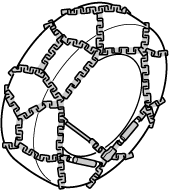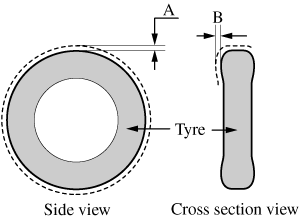Tyre Chains
Check local regulations before using tyre chains.
-
Chains may affect handling.
-
Do not go faster than 50 km/h (30 mph) or the chain manufacturer's recommended limit, whichever is lower.
-
Drive carefully and avoid bumps, holes, and sharp turns.
-
Avoid locked-wheel braking.
-
Do not use chains on roads that are free of snow or ice. The tyres and chains could be damaged.
-
Chains may scratch or chip aluminium wheels.


If your vehicle is equipped with the tyre pressure monitoring system, the system may not function correctly when using tyre chains.


Install the chains on the rear tyres only.
Do not use chains on the front tyres.
Tyre chain selection (Europe)
Mazda recommends hexagon type steel ring chains. Select the proper type according to your tyre size.

|
Tyre size |
Tyre chain |
|---|---|
|
195/50R16 |
Hexagon type |
|
205/45R17 |
Hexagon type |
Although Mazda recommends hexagon type steel ring chains, all chains within the installation specifications may be used.


Installation specification (Europe)
When installing tyre chains, the distance between the tyre tread and the chain must be within the prescribed limits in the following table.
|
Distance [Unit: mm (in)] |
|
|---|---|
|
A |
B |
|
MAX 11 (0.43) |
MAX 11 (0.43) |

Installing the chains
-
Secure the chains on the rear tyres as tightly as possible. Always follow the chain manufacturer's instructions.
-
Retighten the chains after driving 1/2―1 km (1/4―1/2 mile).


 Read this first
Read this first



















